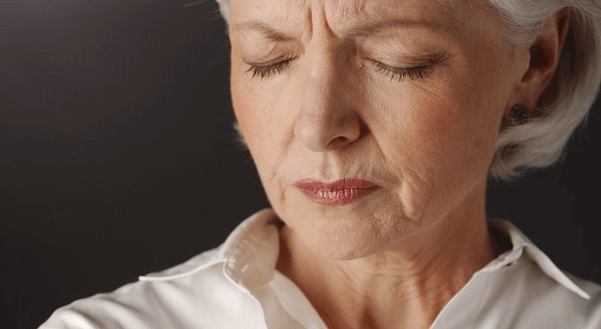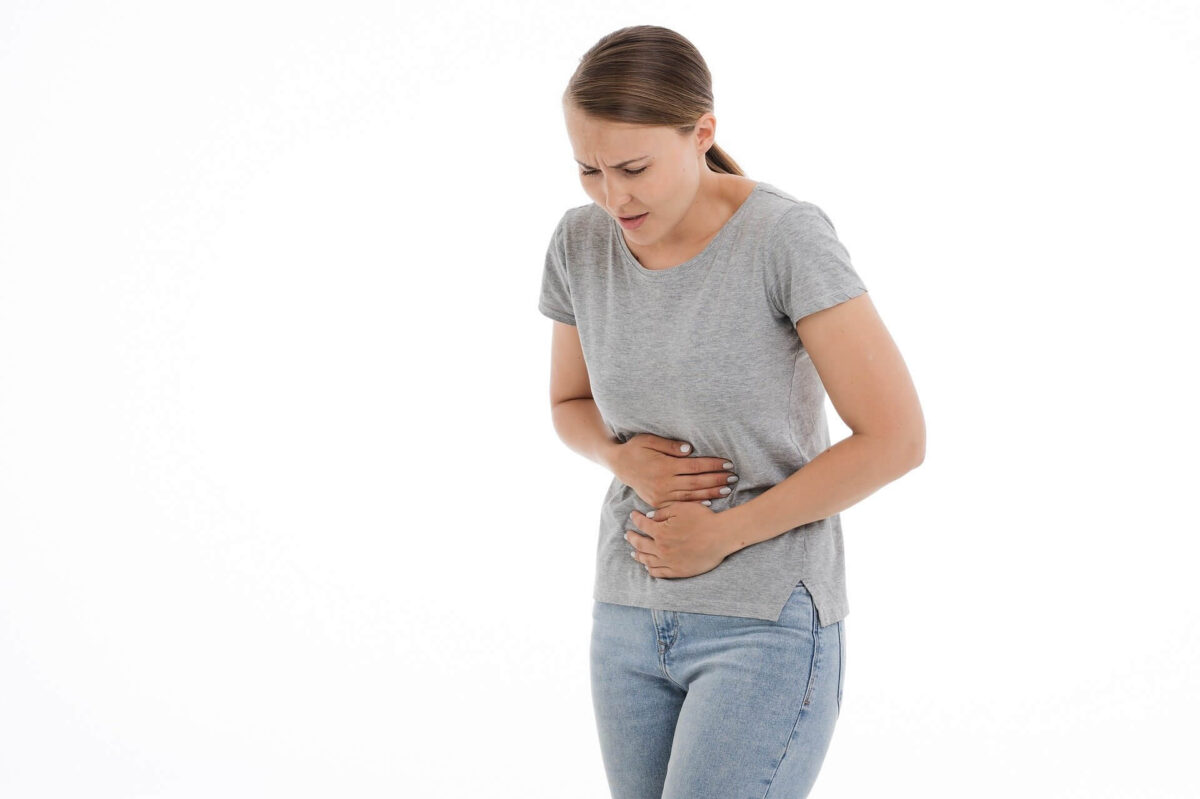Menopause and Period
Most women experience some form of discomfort 1-2 weeks before or during their menstrual period. As they get closer to menopause, both psychological and physical symptoms may intensify. Cramps, back pain, bloating, swollen and tender breasts, food cravings, acne, mood swings, irritability, crying spells, insomnia, and fatigue are some of the symptoms from which you may suffer each month.
Premenstrual Syndrome (PMS)
Begins at or after ovulation (usually around the middle of the menstrual cycle) and may continue until the beginning of menstruation. Many women continue to experience symptoms such as cramps during menstruation.
Some women experience a lessening of their symptoms as their periods gradually diminish. Others may experience stronger cramps because of heavy menstrual bleeding or PMS that drags on forever because their periods are farther apart. While PMS has often been brushed off as being “all in our heads,” there are clear hormonal, structural, and metabolic causes of PMS.
Some estimate that PMS affects more than 90% of all women at some point in their lives. In some women, the condition is so severe that it disrupts work and social relationships. Most women with PMS have too much estrogen relative to progesterone. This can be due to too much estrogen, or too little progesterone, and there can be many causes of either.
These hormones invariably affect almost all organ systems. The ratio of estrogen to progesterone governs emotions, electrolyte and water balance, vitamin B-6 metabolism, and blood glucose levels, triggering a cascade of related physical symptoms that are characteristic of PMS.
PMS Relief
Most conventional medicines for PMS fall under the category of aspirin or ibuprofen and anti-inflammatory drugs, which interfere with prostaglandins, a natural substance produced by our bodies and which is associated with inflammation.
Inflammatory chemicals increase the pain, local swelling, and cramping associated with PMS. Some doctors prescribe diuretics, which address bloating by reducing excess water in the tissues through increased urination. Most of these medicines have potentially serious side effects.
There are more natural substances, such as vitamins and herbs, which decrease inflammation and act as diuretics. You can build your own natural prescription based on your specific symptoms, and you will likely find that many of your symptoms disappear.
Menopause Cause Breast Lumps and Tender Breasts
Breast lumps are very common in women, and it may appear to be more common or prominent as we grow older. That’s because our breasts are made of fat and connective tissue, and as we age, the composition changes. Some areas of the breast start to feel denser because there is more connective tissue and less fat. This thickening of the tissue is common and usually not a problem.
The medical term for this is fibrocystic breast disease, but we feel a better term is fibrocystic changes. Only rarely is it associated with an increased risk of breast cancer. However, lumpy breasts make it more difficult to feel cancers in the breast.
Breasts feel swollen and tender, ebbing and flowing with the menstrual cycle. Breast tenderness that accompanies hormonal cycles may temporarily worsen during perimenopause, when any hormone imbalance may become extended as the premenstrual period is longer in less frequent cycles.
This eventually diminishes after menopause, and you should not be aware of breast tenderness in the absence of any trauma to the breast such as from an accident. Although it may be alarming to feel a lump in your breast, 80-90% is benign and need no treatment at all once cancer is excluded from the diagnosis.
Menopause and Heart Palpitations
Some women experience heart palpitations during menopause. Although this can be frightening and uncomfortable, a racing heart does not usually indicate heart disease. The rapid or irregular heartbeat up to 200 beats per minute that some women experience during or after menopause can be related to the same vassal mechanisms that produce hot flashes. They can also accompany hot flashes.
A hormone imbalance is implicated in both since your endocrine system interacts with your nervous system and together they are sometimes referred to as the neuroendocrine system.
Nerves and muscles control the width of your blood vessels, and the fibers of the muscles surrounding your blood vessels contract, closing off the arteries, or relax, allowing them to open. This is controlled by the vasomotor center in your brain stem and by local hormonal factors which regulate blood pressure and heart function.
Misread signals from the nerves to the brain may also be responsible for the sensations of itchy, crawly skin, and numbness and tingling in the extremities that some women experience during this time of life.
Heart palpitations may also indicate anxiety or stress; metabolic problems such as low calcium, magnesium, or potassium; caffeinism; thyroid or adrenal imbalance; or a surge of adrenaline due to toxicity, food allergy, or environmental sensitivity.
Menopause Cause Heavy Periods or Menorrhagia
Changes in your menstrual cycle are often the first sign of approaching menopause. The time between your menstrual periods may become longer or shorter. Some women’s flow becomes lighter; others experience menorrhagia, the heavy, excessive menstrual bleeding which often occurs during the years preceding menopause (perimenopause).
Moderately heavy menstrual bleeding can prove both physically annoying and emotionally stressful to any woman. But you may find it particularly troublesome if you have had regular, mild periods during your twenties and thirties. As early as your late thirties or early forties, you may begin to have excessive bleeding for a day or two each month.
Heavy bleeding
May even be accompanied by other symptoms, such as dizziness, weakness, and cramping. Some women experience the symptoms of temporary anaemia owing to the loss of oxygen-rich red blood cells.
The important thing to remember is that all this is part of your body’s way of coping with natural hormonal changes. Irregular and somewhat heavy bleeding is a normal physiological reaction to the prolonged release of the hormone estrogen from your ovaries, without ovulation actually taking place.
Ovulation
Is delayed because, as you grow older, the remaining follicles in your ovaries become resistant to FSH (the follicle-stimulating hormone) secreted by the hypothalamus gland in your brain. Either that or they don’t develop an egg, and thus no progesterone is produced. Without progesterone, the estrogen is “unopposed” and keeps building up the lining of the womb.
The menstrual fluid which you normally shed during your period never gets the signal to stop thickening. It keeps growing and sheds irregularly. Because of the extra thickness, the bleeding is unusually heavy. Less frequently in this age group, the irregular bleeding is due to too little estrogen.
While most cases of hemorrhagic are due to normal hormonal changes preceding menopause, you should see your doctor to rule out other underlying causes if the bleeding persists.
There are many steps that you can take to make yourself as comfortable as possible as you pass through this natural change of life.
Menopause Cause Irregular Periods
Irregular periods are a ubiquitous sign of approaching menopause. You’ll probably begin having unpredictable periods and even skip some for as long as 2 or 3 years before you stop altogether, but remember that everyone is different. Some women’s periods end quite suddenly, and others begin skipping periods 5 or 6 years before the last one.
Periods
Become irregular because you’re ovulating irregularly. As explained in Heavy Periods, when you don’t release an egg, only estrogen (although perhaps in lower amounts) is stimulating the lining of your uterus; progesterone levels are way too low to cause the lining to shed. It may take several months for the lining to break down and create a menstrual flow.
The most common pattern is that of unusually heavy periods, in which you may see large clots of blood, accompanying some irregularity.
Irregularity may mean that instead of having a period every 28-36 days (whatever your usual cycle), you’ll start having them quite unpredictably, perhaps one time 40 days after the last, and another, 28 days, and the next, 52 days. Then you may skip a couple of cycles altogether, then go back to your regular pattern, and then skip three or four cycles. None of this is unusual or indicative of a problem, as your health care professional will probably tell you.
Annoying as irregular periods are in and of themselves, you should know that if you tend to experience PMS, symptoms may drag on for weeks or months at a time, because there is no menstrual flow to bring on relief. You should also know that even if your periods are still appearing at least once every 6 months, even if they are spotty and brown.
Menopause and pregnancy
And even if you’re 55, you can still get pregnant.
Whether you will retain the fetus is another story since you may not be producing high enough levels of hormones to give the developing fetus a sufficiently nourishing uterine lining.
To prevent unwanted pregnancies, use serious birth control all the time until you have not had a period for a whole year. You can then assume that menopause has occurred, and you’re no longer ovulating. Even so, birth control isn’t guaranteed, and irregular periods can be quite nerve-racking.
It may help if you keep these guidelines in mind: If you do skip a period and have unusual symptoms such as breast tenderness and nausea, it’s quite possible you’re pregnant; on the other hand, if you have menopausal.






